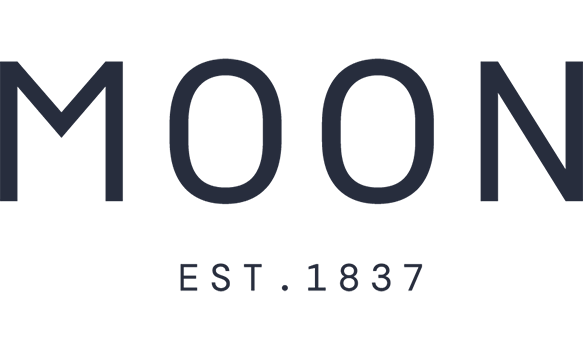EST. 1837
Sustainability at Moon
Our efforts within the mill and beyond.
We are proud to be a British manufacturer that utilises such an eco-friendly material.
Paired with our continued efforts towards responsible sourcing, waste and resource management, we strive to continually improve our commitment to innovation to deliver products of the highest ethical quality.
Investment
We are continually investing in our machinery to ensure maximum efficiency in our production, and energy consumption. Within the last five years alone we have invested in new Karl Mayer Warping Machinery, Cimi Finishing Scourers, Staubli Drawing-in Machines, Dornier Looms, Polar Winding Machines, and new Mending stations.

Our new Staubli drawing-in machines allow for a more efficient preparation of warp yarn beams for the looms.

With our state-of-the-art Karl Mayer warping machines, we have solidified our warping capabilities as one of the most efficient in Europe – producing hundreds of metres of warp yarns every day.

New mending stations, with LED backing lights for greater efficiency in the process of manually inspecting each length of fabric and making adjustments where necessary.

Our weaving department is capable of weaving 30,000 metres of cloth per week. With investments in the latest textile weaving technology, we ensure that our production efficiency is maximised.
Energy & Water
We are mindful of our impact on the resources required for fabric production, and continually strive to improve our processes. We already have a number of energy-saving initiatives in place.

We have over 520 solar panels installed across the roof of our woollen mill, which support our mill’s electricity requirements. In addition to this, we have energy-efficient LED lighting installed throughout our site.

We have a unique on-site bore hole which provides our own exclusive source of natural water from the spring water that runs through Guiseley – essential for many of our production processes.
Wastage
We meticulously sort all waste that moves through our mill to ensure proper disposal – from cardboard and paper recycling, to capturing loose fibre and waste selvedge and sending it off to be properly recycled.

Cardboard and plastic waste is collected and sorted to be properly recycled in bulk.

Waste selvedge and un-usable fabric scraps are collated and pressed into bales to be collected in bulk for recycling.


